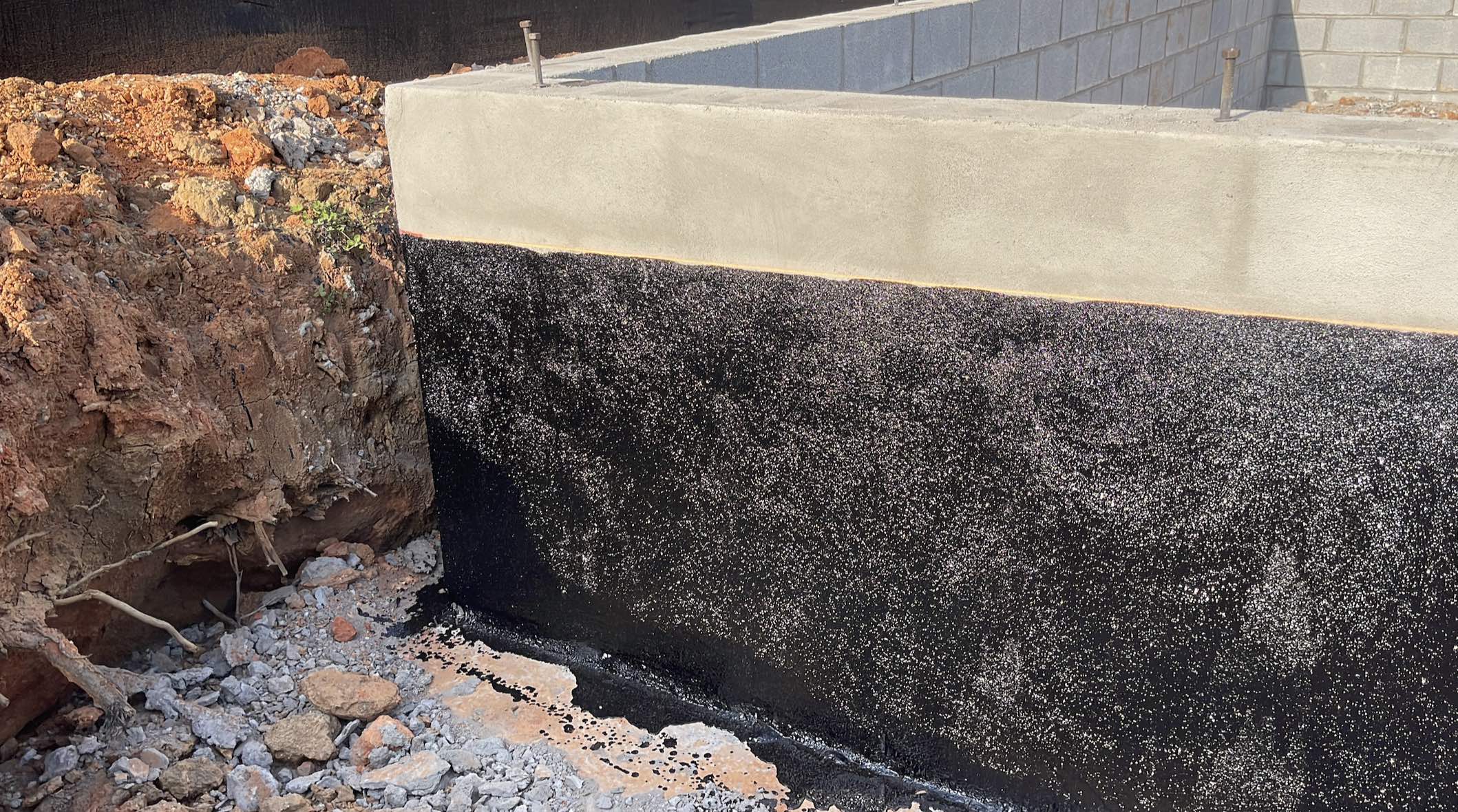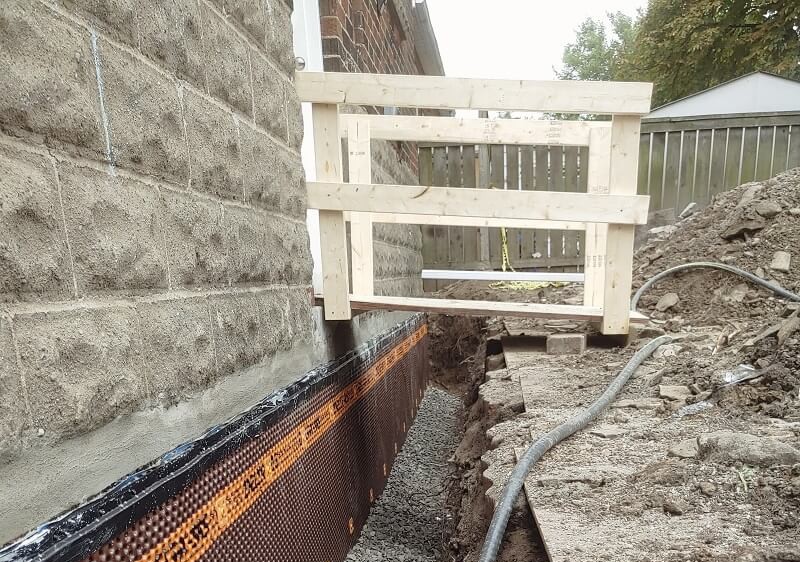Addressing condensation problems permanently with mould treatment newcastle
Addressing condensation problems permanently with mould treatment newcastle
Blog Article
Recognizing the Relevance of Damp Proofing in Fighting Structural Damage
Wet proofing works as a crucial protection against moisture infiltration in buildings. This safety measure can prevent considerable architectural damage, yet many homeowner stay not aware of its significance. Recognizing the signs of dampness and comprehending the different solutions readily available can be imperative. Neglecting wet proofing can lead to severe effects. What are the particular threats and options that residential or commercial property owners should consider?
What Is Damp Proofing and Exactly How Does It Work?
Wet proofing serves as a vital obstacle against dampness intrusion in buildings. damp proofing newcastle. This process entails applying particular materials and techniques to stop water from penetrating walls, floors, and other architectural components. Usually, wet proofing can be attained through the setup of wet evidence membranes, finishings, or the usage of specialized sealants.These approaches function by creating a protective layer that hinders dampness motion, making certain that the indoor environment remains completely dry and healthy. Damp proofing is specifically important in locations susceptible to high humidity or groundwater, as it helps maintain the honesty of the structure over time.Moreover, effective wet proofing adds to power performance by preventing warm loss related to damp atmospheres. By attending to possible wetness issues prior to they rise, damp proofing functions as an aggressive measure in guarding buildings from the harmful effects of water damages, eventually extending their life-span and preserving their value
Common Indications of Moisture in a Building
Dampness problems within a structure can manifest with numerous obvious signs that indicate the existence of dampness. One famous sign is the look of water stains on ceilings or wall surfaces, which frequently indicates dampness infiltration. In addition, peeling or bubbling paint can suggest that excess humidity is entraped underneath the surface, causing damage. Another usual indicator is the visibility of mold and mildew, which grow in moist problems and can usually be identified by their stuffy smell. Moreover, a surge in humidity degrees can create condensation on home windows and other surface areas, highlighting dampness issues. Lastly, uneven or distorted floor covering might indicate underlying wetness that compromises structural stability. Identifying these indicators early can aid mitigate prospective damage and keep a risk-free living atmosphere. Routine inspections and prompt activity are necessary in dealing with dampness problems prior to they escalate.
The Threats of Ignoring Damp Proofing
Overlooking wet proofing can lead to considerable hazards to a structure's architectural stability, as dampness build-up might damage wall surfaces and structures. In addition, long term wetness produces a setting for mold and mildew growth, posturing significant carcinogen to occupants. Attending to these threats is vital for making sure both safety and security and long life of the building.
Architectural Honesty Dangers
They subject their homes to substantial structural stability threats when homeowners overlook the relevance of effective wet proofing. Extended dampness seepage can cause the development of mold, which damages foundational elements and can endanger overall security. Additionally, excess wetness can erode concrete and brickwork, leading to splits and structural failings. Timber parts are particularly at risk; they can rot and shed load-bearing capacity, presenting significant threats to the structure's framework. Untreated moist conditions may draw in insects, such as termites, which better worsen architectural damage. Inevitably, neglecting damp proofing procedures can cause expensive repair services and potential security threats, underscoring the important duty of proactive moist administration in preserving the honesty of homes.
Carcinogen Problems
Exactly how can an apparently small oversight bring about significant health and wellness threats? Disregarding wet proofing can produce an atmosphere favorable to mold development, which poses significant health hazards. Mold and mildew spores can trigger allergic responses, breathing issues, and various other health problems, specifically in susceptible populations such as kids, the elderly, and people with pre-existing conditions. In addition, consistent dampness can bring in bugs like insects and rats, which carry diseases that further jeopardize health. The visibility of wetness likewise adds to a decrease in interior air top quality, exacerbating bronchial asthma and other respiratory system ailments. The failure to resolve wet issues not only intimidates structural honesty yet also threatens the wellness of passengers, highlighting the vital demand for effective wet proofing steps.
Various Sorts Of Damp Proofing Solutions
Numerous variables can add to damp issues in buildings, picking the ideal wet proofing solution is crucial for protecting architectural integrity. Several choices are readily available, each tailored to particular conditions.One common solution is a damp-proof membrane layer (DPM), normally constructed from polyethylene or asphalt, which is installed in floorings and wall surfaces to stop wetness ingress. One more choice is damp-proof courses (DPC), which are layers of waterproof material put within wall surfaces to obstruct increasing damp.Chemical damp proofing involves infusing waterproofing chemicals right into wall surfaces to produce a barrier versus wetness. Additionally, outside treatments such as tanking, which entails using a water resistant layer to the exterior of structures, can be efficient in stopping water penetration.Each option has its advantages and is chosen based on the structure's certain concerns, environmental conditions, and lasting maintenance factors to consider, guaranteeing excellent defense against damp-related damages.

The Cost of Damp Damage vs. Prevention
Understanding the monetary ramifications of wet damages contrasted to avoidance highlights the value of positive procedures. The costs related to moist damage can be substantial, consisting of repairs to structural elements, mold and mildew remediation, and prospective health-related costs. House owners might deal with substantial economic stress if extensive damage happens, causing boosted insurance coverage premiums and lost building value.In contrast, investing in wet proofing remedies is commonly much more affordable. Preliminary costs for prevention methods, such as mounting damp-proof membrane layers or boosting drainage systems, are usually website surpassed by the long-lasting savings from staying clear of pricey repairs. In addition, stopping damp concerns can improve a building's general worth and charm, making it a sensible investment. When evaluating the expense of wet damage versus avoidance, it becomes clear that taking aggressive steps can guard financial passions and preserve the honesty of the building gradually.
Selecting the Right Damp Proofing Approach for Your Residential or commercial property
Which wet proofing method is most ideal for a specific property typically relies on various elements, including the structure's age, existing dampness issues, and regional ecological problems. For older frameworks, traditional methods such as bitumen membranes or cementitious coatings may be much more efficient, as they can supply a durable barrier against rising moist. On the other hand, more recent buildings might take advantage of contemporary remedies like infused damp-proof training courses, which are much less intrusive and can be customized to particular moisture challenges.Additionally, homes in areas with high water tables or hefty rainfall may require more innovative methods, such as tooth cavity wall surface drainage systems or exterior waterproofing. House owners need to additionally take into consideration the details materials used in their building's building and construction, as some approaches might not be suitable. Inevitably, a detailed analysis by an expert can assist homeowner in picking the most reliable moist proofing method tailored to their distinct circumstances.
Keeping Your Damp Proofing System With Time
Routine maintenance of a damp proofing system is essential for guaranteeing its long-term effectiveness and shielding a residential or commercial property from moisture-related damage. Homeowner need to perform routine inspections to identify any kind of indicators of wear or concession in the moist proofing layer. This includes checking for fractures, peeling paint, or mold and mildew growth, which may indicate moisture intrusion.Additionally, it is advisable to tidy rain gutters and downspouts on a regular basis to protect against water accumulation around the structure. Reapplying membranes or sealers may be necessary if deterioration is observed.Engaging professional solutions for regular assessments can better improve the toughness of the system. These professionals can offer understandings into prospective susceptabilities and advise timely repairs.
Frequently Asked Inquiries
For How Long Does Damp Proofing Treatment Last Prior To Requiring Repairs?
The long life of damp proofing therapy usually ranges from 10 to thirty years, depending on elements such as the technique utilized, ecological conditions, and upkeep techniques. Regular examinations can help identify when repair services might be required.
Is Do It Yourself Damp Proofing Effective Contrasted to Professional Services?
The effectiveness of DIY damp proofing differs considerably. mould removal newcastle. While some people may accomplish sufficient outcomes, specialist services typically assure complete remedies, leveraging competence and top quality products to stop future concerns extra accurately than a lot of DIY efforts
Can Damp Proofing Improve Indoor Air Quality?
The question of whether damp proofing can improve interior air top quality develops often. Effective wet proofing lowers moisture degrees, consequently lessening mold development and irritants, inevitably adding to a healthier indoor environment for occupants.
Exist Particular Regulations for Damp Proofing in Various Areas?
Regulations for wet proofing differ by region, frequently influenced by regional structure codes and ecological conditions. Compliance warranties effective wetness control, guarding frameworks and advertising safety and security, which highlights the requirement for adherence to these particular regulations.

What Are the Long-Term Benefits of Appropriate Damp Proofing?
The long-lasting advantages of correct wet proofing include boosted architectural stability, minimized maintenance costs, boosted interior air high quality, and increased residential or commercial property value. These advantages contribute to a healthier living setting and long term life expectancy of buildings. Usually, moist proofing can be accomplished through the installation of damp evidence membranes, finishes, or the usage of specialized sealants.These methods work by creating a safety layer that inhibits moisture motion, making sure that the interior setting remains completely dry and healthy and balanced. Wet proofing is particularly important in locations vulnerable to high humidity or groundwater, as it aids maintain the honesty of the structure over time.Moreover, reliable damp proofing adds to energy effectiveness by avoiding warm loss linked with damp settings. Ignoring wet proofing can lead to considerable dangers to a building's architectural stability, as moisture buildup may damage walls and structures (damp specialist newcastle). Various aspects can add to damp problems in buildings, picking the suitable wet proofing solution is important for preserving architectural honesty. Which moist proofing approach is most suitable for a certain property usually depends on different factors, consisting of the building's age, existing dampness concerns, and neighborhood environmental conditions
Report this page